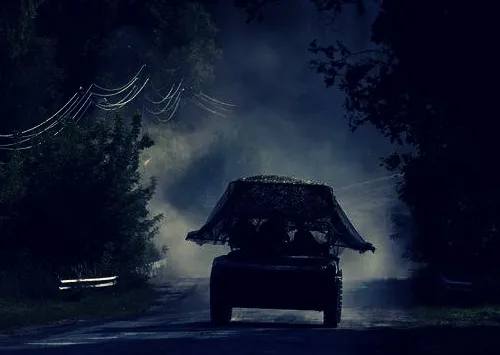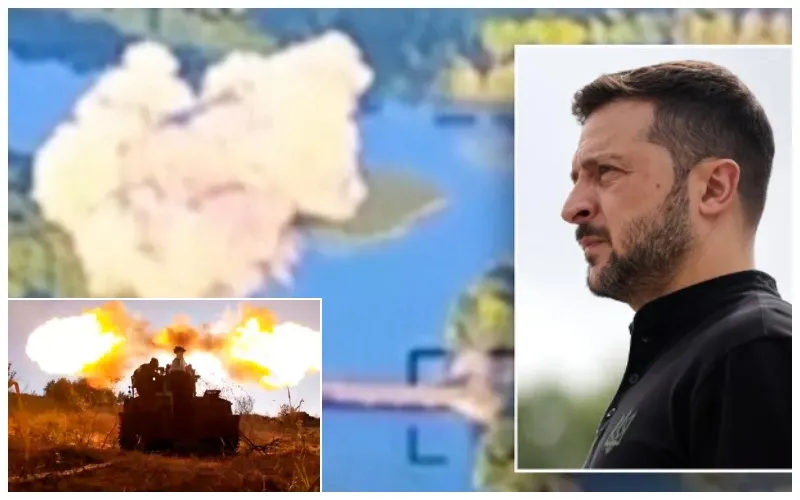
Zelenskyy Announces ‘Buffer Zone’ Strategy: Ukraine’s Bold Move into Russia’s Kursk Region
In a significant escalation of the conflict, Ukrainian President Volodymyr Zelenskyy revealed that Ukraine’s military has launched an offensive into Russia’s Kursk region. This move aims to establish a “buffer zone on the aggressor’s territory,” which Zelenskyy believes will deter further Russian attacks on Ukraine.
Ukraine’s Tactical Advance
On Sunday, Zelenskyy highlighted the progress of Ukrainian forces in Kursk, emphasizing that their foothold in the region is strengthening. He praised the Ukrainian fighters for their successful capture of Russian troops, noting that this will aid in the exchange of Ukrainian prisoners and hasten the release of those held by Russia. Zelenskyy stated, “It is now our primary task to destroy as much Russian war potential as possible and conduct maximum counteroffensive actions.”
The Ukrainian military has reportedly held onto the captured land, which spans nearly 400 square miles, for almost two weeks. Ukrainian forces are also working to repel any Russian efforts to regain control. The Commander of Ukraine’s Air Force, Mykola Oleschuk, announced that a second bridge in the Kursk region has been heavily damaged, a strategic move aimed at undermining Russia’s combat capabilities.

International Reactions and Developments
Russian Response
The Ukrainian incursion has elicited varied responses from Russian officials. Russian President Vladimir Putin has downplayed the significance of the offensive, referring to it merely as a “situation” and accusing the U.S. and the West of orchestrating it. However, U.S. officials have clarified that they were unaware of Ukraine’s plans prior to the attack.

In addition, two women were reported wounded in Russia’s Belgorod region due to Ukrainian drone attacks. The Russian Foreign Ministry claimed that Ukraine used Western-made rockets, likely U.S.-supplied HIMARS, to destroy a bridge and impact evacuation efforts.
Impact on Civilians
The conflict has severely affected civilians in the Kursk region. Local authorities have evacuated over 120,000 residents due to the fighting. Marina Degtyareva, an official in the Korenevo district, warned that returning home prematurely poses risks and that residents will be notified when it is safe to return.
Moscow’s Diplomatic Denials
Amidst the military actions, Russia has denied any indirect negotiations with Ukraine regarding the protection of civilian infrastructure. Russian Foreign Ministry spokesperson Maria Zakharova dismissed reports of talks aimed at limiting attacks on energy and power infrastructure, stating, “There have been no direct or indirect negotiations between Russia and the Kyiv regime on the safety of civilian critical infrastructure facilities.”
Continued Conflict and Escalation
Ongoing Attacks on Kyiv
In response to the Ukrainian advances, Russia has intensified its missile attacks on Kyiv. The Ukrainian military administration reported a third ballistic missile assault this month, with preliminary data suggesting that most missiles were intercepted. While there were no reported casualties, the attack resulted in the destruction of two private houses and damage to sixteen others.
Since Russia’s initial invasion of Ukraine two-and-a-half years ago, the conflict has led to Russia controlling about 20% of Ukrainian territory in the east and south. The latest developments indicate a high-stakes phase in the ongoing war, with both sides engaging in significant military and diplomatic maneuvers.
This bold Ukrainian move into Kursk underscores the ongoing intensity of the conflict and the high stakes involved for both Ukraine and Russia. As the situation evolves, the international community continues to watch closely, with potential implications for global diplomatic and security dynamics.



